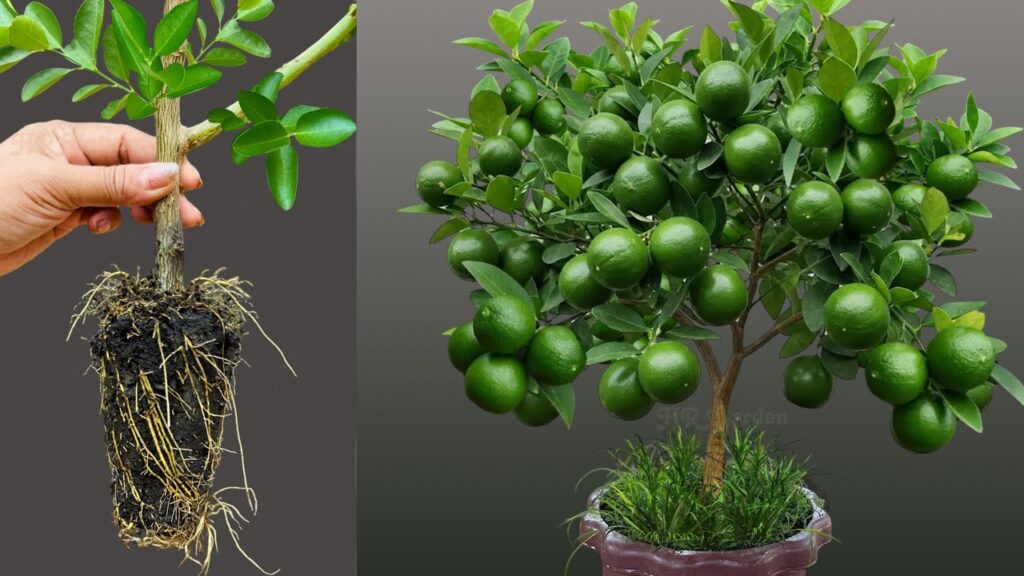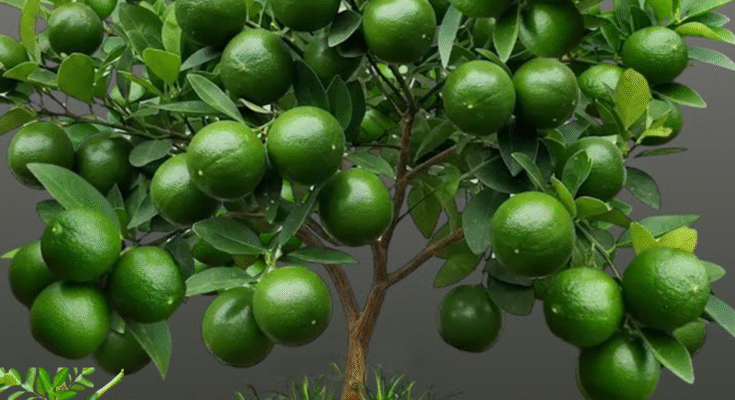How to Grow Lemon Fruit ?
Lemons are not only a popular citrus fruit used in countless recipes and beverages, but they are also surprisingly rewarding and manageable to grow at home. Whether you’re a beginner gardener or an experienced green thumb, growing lemon trees can be both a satisfying and fruitful experience. With proper care, patience, and the right environment, you can enjoy fresh, homegrown lemons year-round. Here’s a detailed guide on how to grow lemon fruit successfully.
Choosing the Right Lemon Variety
Before you start planting, it’s important to choose the right variety of lemon for your climate and space. Some popular lemon varieties include:
- Eureka: Common in supermarkets, produces fruit year-round.
- Lisbon: Similar to Eureka, more tolerant of hot and cold temperatures.
- Meyer: A hybrid between a lemon and a mandarin orange, known for its sweeter taste and compact size—ideal for indoor or container growing.
Meyer lemons are a great choice for home growers, especially if you live in a cooler climate or plan to grow your tree indoors.
Selecting the Right Location
Lemon trees thrive in warm, sunny environments. Ideally, they should receive at least 8 hours of sunlight per day. If you’re planting outdoors, choose a spot with full sun and well-drained soil. Indoors, place the tree near a south-facing window or use grow lights to supplement natural sunlight.
Temperature is also key. Lemon trees prefer temperatures between 70°F and 85°F (21°C to 29°C) during the day. They are sensitive to frost, so in colder regions, it’s best to grow lemons in containers so you can bring them indoors during winter.

Planting Lemon Trees
Lemon trees can be planted from seed, but it’s more reliable and faster to start with a young grafted tree from a nursery.
For Outdoor Planting:
- Soil Preparation: Lemons need well-draining, slightly acidic soil (pH 5.5–6.5). If your soil is clay-heavy, amend it with sand or compost to improve drainage.
- Dig a Hole: The hole should be twice as wide and just as deep as the root ball of the tree.
- Planting: Place the tree in the hole so that the top of the root ball is level with the ground surface. Fill the hole with soil and gently tamp it down.
- Watering: Water thoroughly after planting and keep the soil consistently moist (but not soggy) as the tree establishes.

For Container Planting:
- Choose the Right Pot: Use a large container (at least 12–14 inches in diameter) with good drainage holes.
- Soil Mix: Use a well-draining potting mix designed for citrus or cactus.
- Repotting: As the tree grows, repot every 2–3 years to refresh the soil and allow more room for roots.
Watering and Fertilizing
Lemon trees require consistent watering, especially when young. The goal is to keep the soil evenly moist, not waterlogged.
- Outdoor Trees: Water 1–2 times per week, more often in hot, dry weather.
- Indoor Trees: Check soil moisture regularly; water when the top 1–2 inches feel dry.
Fertilize your lemon tree every 4–6 weeks during the growing season (spring to summer) with a fertilizer specially formulated for citrus trees, which contains nitrogen, potassium, and micronutrients like magnesium and iron.

Pruning and Maintenance
Pruning helps lemon trees stay healthy and productive. Remove any dead, damaged, or crossing branches. Thin out crowded areas to improve air circulation and light penetration.
For potted trees, prune to maintain a manageable size. You can also pinch back the tips of new growth to encourage a bushier shape.
Regularly check for pests like aphids, spider mites, and scale insects. Neem oil or insecticidal soap can help control infestations naturally.

Pollination
Lemon trees are self-pollinating, meaning they don’t need another tree to bear fruit. However, for indoor plants, hand-pollination may improve fruit yield. Use a small paintbrush or cotton swab to gently transfer pollen between flowers.
Patience and Harvesting
It takes time for a lemon tree to mature and produce fruit. Grafted trees can begin bearing fruit in 1–3 years, while trees grown from seed may take up to 5–7 years.
Lemons are ready to harvest when they have a full yellow color and a slight give when gently squeezed. Don’t rush picking; lemons left on the tree often become juicier and sweeter over time.
Harvest lemons with pruning shears or by gently twisting them off the tree. Avoid pulling, as this can damage the tree.

Common Issues and Solutions
- Yellow Leaves: Often a sign of overwatering, nutrient deficiency, or cold stress.
- Leaf Drop: May occur due to sudden temperature changes or drafts indoors.
- No Fruit: Could be due to insufficient sunlight, improper fertilizing, or immature trees.
Adjusting care habits, ensuring good light exposure, and regular feeding usually resolve these issues.
Conclusion
Growing lemon fruit is a delightful and rewarding hobby. With the right care, even beginners can cultivate a thriving lemon tree that produces delicious fruit. Whether you have a large garden or a small apartment balcony, lemon trees adapt well and bring a touch of freshness to any space. Remember, patience is key. With time, attention, and a little sunshine, you’ll be rewarded with fragrant blossoms and tangy lemons straight from your own tree.




